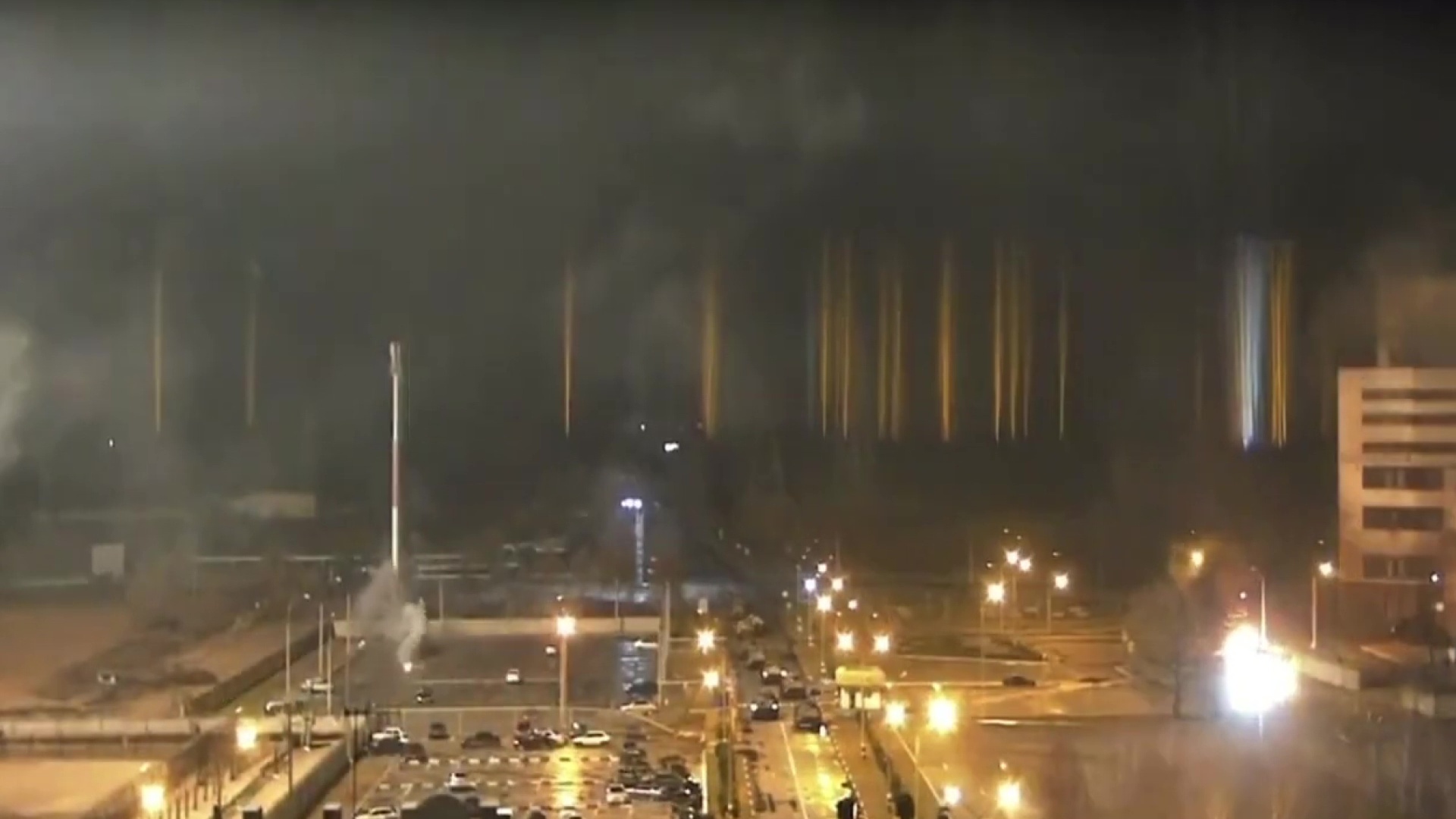UN atomic watchdog loses contact with second nuclear plant in Ukraine
Both the Zaporizhzhia and the Chernobyl plants are now no longer transmitting data.

A Ukrainian nuclear power plant which caught fire during a siege by Russian forces last week has had its communication lines cut, the UN's atomic watchdog has warned.
The International Atomic Energy Agency (IAEA) has said that data transmission has been lost at the active nuclear plant at Zaporizhzhia, which was taken over by Russian forces on March 4, Live Science previously reported. Without technical measures in place to keep track of nuclear material at the plant, the UN agency has no way of knowing how it is being handled or its current location, increasing the possibility that it could fall into the wrong hands.
"The remote transmission of data from IAEA safeguards equipment located at nuclear sites around the world is an important component of our safeguards implementation, in Ukraine and globally," IAEA Director General Rafael Grossi said in a statement. "Such systems... enable us to monitor nuclear material and activities at these sites when our inspectors are not present."
Related: 5 weird things you didn't know about Chernobyl
Alongside the defunct Chernobyl power plant, the Zaporizhzhia plant is the second nuclear site in Ukraine to have data transmission to the outside world cut off.
Russian forces attacked and seized the Zaporizhzhia nuclear power plant on the ninth day of their invasion of Ukraine. The storming of the facility led to a stray shell sparking a fire at an auxiliary training building just 490 feet (150 meters) from one of the plant's reactor units. It blazed for several hours before being put out by firefighters.
The Chernobyl nuclear facility was taken on the first day of the invasion (Feb. 24). After heavy fighting, Russian forces captured the defunct plant and took its roughly 210 staff hostage. An announcement made yesterday (March 9) by Ukraine’s state energy company said that the plant has been disconnected from the electrical grid, leaving its roughly 20,000 spent nuclear fuel units held in cooling tanks without active cooling, Live Science previously reported.
Sign up for the Live Science daily newsletter now
Get the world’s most fascinating discoveries delivered straight to your inbox.
This led to concerns that the defunct Chernobyl reactor's spent fuel would overheat and leak from containment. But the IAEA said in a tweet that while the development "violates (a) key safety pillar," in this case it saw "no critical impact on safety."
The UN agency said that "the heat load of spent fuel storage pool and volume of cooling water at #Chornobyl Nuclear Power Plant'' were "sufficient for effective heat removal without need for electrical supply."
The seven pillars of nuclear safety are seven important regulatory conditions set out by the IAEA for nuclear facilities. Among them are the requirements to maintain the physical integrity of nuclear facilities; ensure that staff are not under coercion or duress; and guarantee a constant supply of electricity to facilities.
Ukraine's state energy company has announced that "there is no possibility to restore the lines" at Chernobyl and that the site’s security systems had also lost power.
Belarus’s President Alexander Lukashenko, a key Russian ally, has instructed Belarusian specialists to restore the Chernobyl plant's power supply, according to the state-owned Belarusian news agency BelTA.
Originally published on Live Science.

Ben Turner is a U.K. based staff writer at Live Science. He covers physics and astronomy, among other topics like tech and climate change. He graduated from University College London with a degree in particle physics before training as a journalist. When he's not writing, Ben enjoys reading literature, playing the guitar and embarrassing himself with chess.









